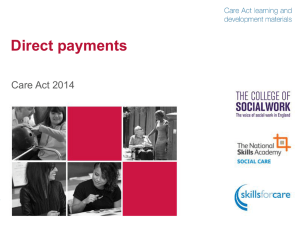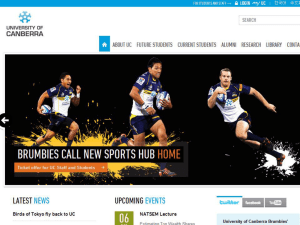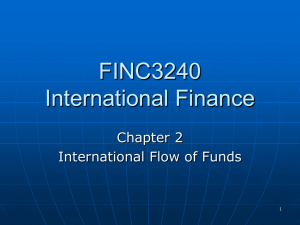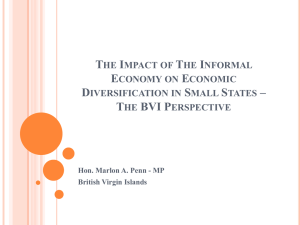Stepurko_Informal patient payments
advertisement
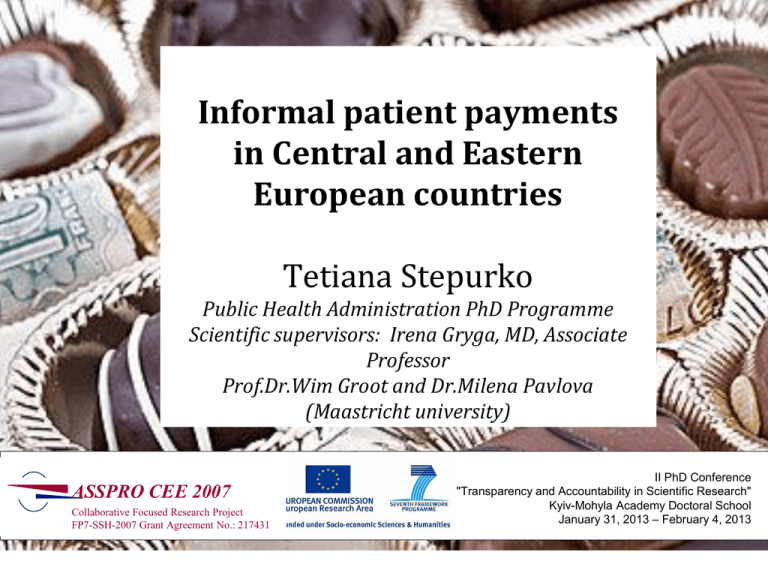
Informal patient payments in Central and Eastern European countries Tetiana Stepurko Public Health Administration PhD Programme Scientific supervisors: Irena Gryga, MD, Associate Professor Prof.Dr.Wim Groot and Dr.Milena Pavlova (Maastricht university) ASSPRO CEE 2007 Collaborative Focused Research Project FP7-SSH-2007 Grant Agreement No.: 217431 ІI PhD Conference "Transparency and Accountability in Scientific Research" Kyiv-Mohyla Academy Doctoral School January 31, 2013 – February 4, 2013 Introduction Chapter 1 Chapter 3 Chapter 2 Chapter 6 Chapter 5 Chapter 4 Discussion WHY RESEARCH ON INFORMAL PAYMENTS? • What are informal payments? • Why are these payments a problem? • Why should they be studied? • To what extent are they studied? • Lack of recent and comparable data on informal payments RESEARCH QUESTION What are the level, scope and consumer’s perceptions of informal patient payments in Central and Eastern European countries? Introduction Chapter 1 Chapter 3 Chapter 2 Chapter 6 Chapter 5 Chapter 4 Discussion The most appropriate research designs when IPP are examined? • The definition of “informal patient payments” is a challenging task • Single country results, • different units of analysis • Variety of data collection modes, sample units and design Methods Systematic literature review: Published in English Empirical studies 31 publication is analyzed qualitatively Face-to-face or self-administrated data collection mode; special attention to wording of the questions, recall period etc. Introduction Chapter 1 Chapter 3 Chapter 2 Chapter 6 Chapter 5 Chapter 4 Discussion Do public attitude matter? Cluster Perceive informal What is 1: your attitudeboth towards Negative; cash payments and in-kind gifts only -informal cash payments / as corruption Indifferent; Cluster 1: Negative towards both informal - gifts cash in-kind payments and in-kind giftsPositive Cluster 2: Perceive both informal to physicians, medical staffgifts or other cash payments and in-kind Cluster 2: towards cash personnel in Negative health care facilities? mostly as corruption payments but positive or indifferent Methods Face-to-face interviews Multistage probability sample National representative survey towards in-kind gifts 1st wave: Cluster 3: Perceive informal cash -Informal cash payments/ 1000 interviews * -Informal cash payments/ payments as corruption and mixed Cluster 3: Indifferent towards both 6 countries -Gifts in-kind answers for in-kind gifts. informal cash payments and in-kind-Gifts gifts in-kind to physicians and medical staff to physicians and medical staff Cluster 4: 4: Perceive both informal Cluster Mostly positive towards both are similar to No; gifts are similar to cash payments in-kind informal cash and payments and in-kind gifts -Corruption / mostly as gratitude Somewhat -Corruption / -gratitude Yes -gratitude Chapter 1 Chapter 3 Chapter 2 Chapter 6 Chapter 5 Chapter 4 Discussion What are the patterns of IPP in CEE? How much is paid (total and informal)? Type of service? Knowledge of formal fee size? Who is Annual and Methods Length of initiator? Country last the service? Face-to-face interviews visit/hospita specificity Who pays? Multistage probability sample lization? Payment for Payment for pharmaceutic. med.supplies What is the purpose? 1st wave: 1000 interviews * 6 countries 2nd wave: 800 interviews * 3 countries Introduction Discussion Chapter 6 Chapter 5 Chapter 4 Chapter 3 Chapter 2 Chapter 1 Informal patient payments for childbirth • Virtually all patients “thank” medical staff • Individual vs Emergency room patients • Combination of informal payments with other types of patient payments • Payments range from $ 300 to $ 700 Methods •Qualitative ethnographic study •20 semi-structured interviews with consumers, providers and key informants •Kiev, Ukraine Introduction Discussion Chapter 6 Chapter 5 Chapter 4 Chapter 3 Chapter 2 Chapter 1 Discussion on policy implications • Multidimensional policy strategies aimed to improve transparency and accountability in public service provision (to eradicate informal payments). Precede-proceed model: • Socio-cultural dimension (predisposing), • Economic-labor (enabling), • and political-regulatory dimension (reinforcing factors) influence not only the behavior but also the environment (the health care system) where the behavior takes place Introduction Chapter 1 Chapter 3 Chapter 2 Chapter 6 Chapter 5 Chapter 4 Discussion Thank to EC for funding! Thank you for unforgettable research experience!!! Acknowledgement of funding: The study is financed by the European Commission under the 7th Framework Programme, Theme 8 Socio-economic Sciences and Humanities, Project ASSPRO CEE 2007 (Grant Agreement no. 217431). The views expressed in this publication are the sole responsibility of the authors and do not necessarily reflect the views of the European Commission or its services.



